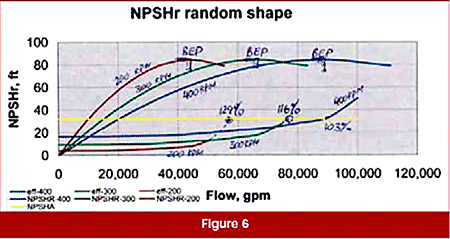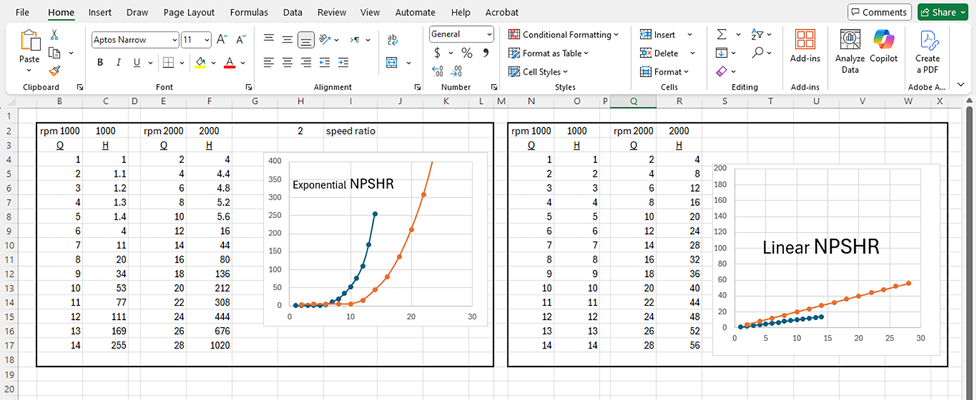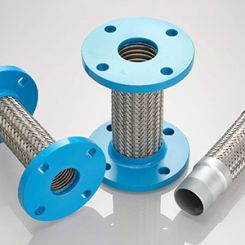

FROM: ALAN CHAPMAN
To: Lev Nelik
Dr. Pump,
I read your article in Pumps & Systems (“Will Running Pumps Slower Help NPSH Problems,” 12/17/2011). I too thought slowing a pump would lower net positive suction head required (NPSHr). I’m trying to create a standard template as part of our variable frequency drive (VFD) pump analysis that can estimate NPSHr at varying speeds.
At the end of the article, it mentions NPSHr stonewalling—and the topic “would be discussed next time.” I’m unaware if “next time” ever happened? I would like to discuss NPSHr as a function of speed, understanding that the NPSHr curve will shift down and to the left as shown in Figure 6 in your article. If you have time to discuss, please let me know.
Thanks,
Alan Chapman, PE
Controls Engineer
Waldron Engineering & Construction, Inc.
Exeter, NH

TO: ALAN CHAPMAN
From: Lev Nelik
Alan,
As a general note, this particular situation is rare, and most people are not well aware of it. Generally, people think, and rightly so, that NPSHr is always less at lower speed, and an approximate rule is similar to the application of affinity laws to pump head—that is, it varies as a square function of the rotations per minute (rpm). So, to avoid NPSH/cavitation issues, a lower speed is always a good thing.
However, that applies only for “normal” cases where a pump operates within a “reasonable” flow range—that is, near or a bit below (or a bit to the right of) the best efficiency point (BEP). But if a pump runs at significantly higher flows, the problems I described in the article can happen.
The reason is pure math: The NPSHr curve is not linear; it begins to rapidly stonewall after it goes past BEP.
You can check it by a simple math test: Construct an NPSH curve that would slowly rise from low flow to (approximately) BEP, and after BEP it changes—perhaps a parabola first, then a cubic parabola, then even higher exponential function. Do that at a few speeds (say, 1,000 rpm and 2,000 rpm), and you will see the resultant effect. Surprisingly, at high flow, you will see the lower speed actually makes the NPSHr higher.
The reason why the NPSHr curve actually behaves like that is in the nuances of impeller passages flow hydraulics, a strongly nonlinear behavior at higher flows—but that is a more involved discussion. If you are interested, we can talk about that as well. But first, let’s look at some math examples.
In the example (Image 2), blue = lower speed and red = higher speed. Shown on the left are (approximated) “linear-with-flow” NPSHr curves. Linearity here is assumed just as a conceptual illustration and as a rough approximation. As in many real curves, NPSHr actually remains nearly constant until approaching closer to BEP.
Shown on the right is a more realistic situation: At lower flows, NPSHr remains relatively flat, but approaching BEP, it stonewalls, following a rapidly increasing exponential relationship. Thus, at higher flow, a fast-running pump would (surprisingly) have a lower NPSHr if it operated at lower flows.
As a note of caution: In the example, if the pump speed is increased (doubled in this example), the flow and head will increase as well, following affinity laws, as shown in the tabulation. So, when speed increases, the flow will increase, and the pump will operate at higher flow, consistent with “normal” NPSHr concerns.
But if the operational flow is desired to stay the same (say, 10 gallons per minute [gpm], as in the example), and the pump now at a higher speed is throttled down to get back to the desired same 10 gpm flow, the NPSHr at this flow would now be lower—even though the pump actually runs faster.
Thank you for your question—and stay away from NPSH troubles!
Dr. Lev Nelik, PE
For more columns from Lev Nelik, visit pumpsandsystems.com/tags/lev-nelik.

